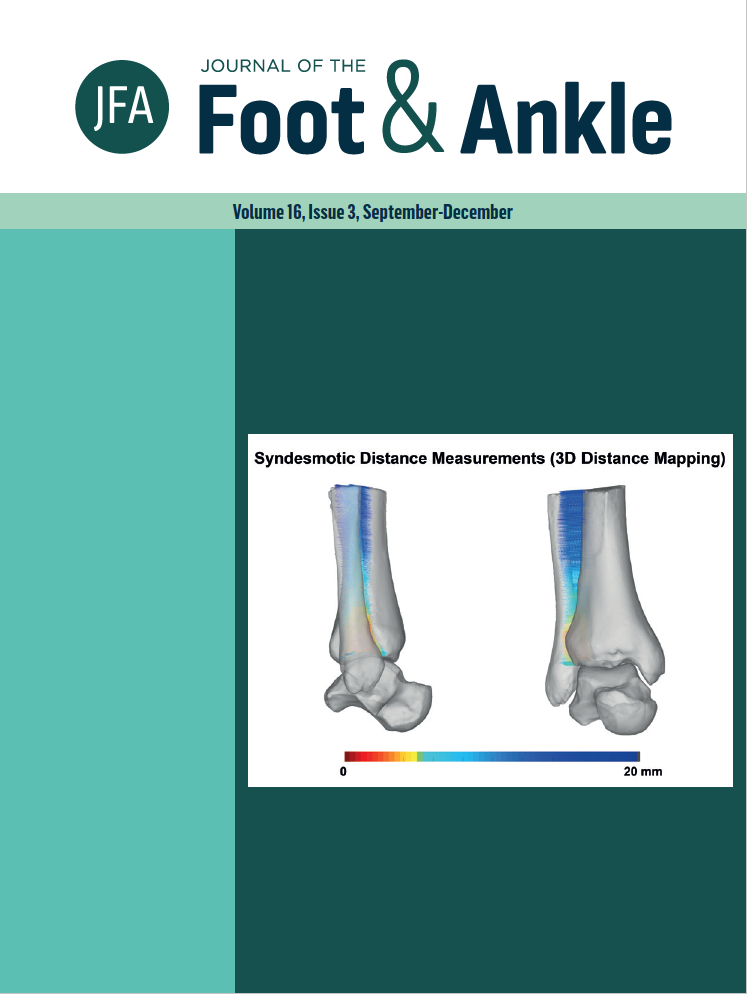Translation, cultural adaptation, and validation of the Manchester-Oxford Foot Questionnaire into Brazilian Portuguese
DOI:
https://doi.org/10.30795/jfootankle.2022.v16.1671Keywords:
Pain, Reproducibility of results, Surveys and questionnaires, TranslationsAbstract
Objective: Translate, culturally adapt and validate the Manchester-Oxford Foot Questionnaire (MOXFQ) into Brazilian Portuguese. Methods: The translation followed the guidelines standardized in the literature, including initial translation, back-translation, committee review, pre-test phase, and application of the final questionnaire in 50 patients. Intraobserver reproducibility was evaluated by reapplying the final version of the questionnaire 14 days after the first application. The validation of the final MOXFQ translation was assessed by conjoint application with the SF-36 Quality of Life questionnaire; similar domain scores of the two questionnaires were compared and analyzed. Results: Excellent reproducibility was observed for three domains with statistical significance, the intra-class correlation coefficient (ICC) values were: pain 0.98, walking/standing 0.99, and social interaction 0.98. Internal consistency/reliability obtained excellent values: pain 0.992, walking/standing 0.997, and social interaction 0.992, all with statistical significance (p<0.001). In the MOXFQ validation compared to the SF-36, the highest correlations of the study were found between the SF36 physical functioning domain and the MOXFQ walking/standing (-0.72) and social interaction domains (-0.73). Comparing the MOXFQ walking/standing domain, a good correlation was obtained with the SF-36 physical functioning (-0.41), bodily pain (-0.42), vitality (-0.45), and mental health (-0.40) domains. Also a good correlation was obtained on MOXFQ pain domain with the SF-36 physical functioning (-0.45) and social functioning (-0.43). Conclusion: The MOXFQ Brazilian version proved reliable, valid, and reproducible in measuring the symptoms and functional limitations of patients affected by foot and ankle diseases. Level of Evidence IV; Therapeutic Studies; Case Series.
Downloads
Published
How to Cite
Issue
Section
License
Copyright (c) 2022 Journal of the Foot & Ankle

This work is licensed under a Creative Commons Attribution-NonCommercial 4.0 International License.







